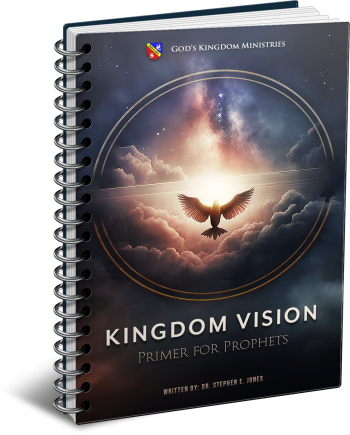Latest Posts
View the latest posts in an easy-to-read list format, with filtering options.

These are basic biblical themes that are necessary in order for prophets to understand what the biblical prophets have already prophesied.
Category - General

When Moses led the Israelites out of Egypt, they all knew that their destination was the land of Canaan—their “Promised Land.” However, Moses did not take them on a direct route along “the way to Shur” (Gen. 16:7). Shur was a town on the border of Egypt, through which people passed along the highway going to and from Egypt.
Israel’s wilderness journey should have taken only a year and a half, but because ten of the twelve spies gave “a bad report” (Num. 13:32), which the people believed, their journey was extended to 40 years. Each oasis was designed to teach them spiritual principles that would prepare their children to enter the Promised Land.
There were three main features of this wilderness journey that are vital for us to understand if we are to have a Kingdom vision. These three are marked by the three main feast days which Israel was to commemorate each year as holidays: Passover, Pentecost, and Tabernacles (or Booths). Exodus 34:23 tells us,
23 Three times a year all your males are to appear before the Lord God, the God of Israel.
These are listed in Exodus 34:18-22: (1) the Feast of Unleavened Bread (Passover), (2) the Feast of Weeks (Pentecost), and (3) the Feast of Ingathering (Tabernacles). These feasts show a progression in our own journey in attaining the promise of God.
Heb. 4:11 describes this promise in terms of entering “rest.” In other words, as long as we remain in the wilderness, we are in a time of labor, as we prepare to enter that rest.
Israel left Egypt at Passover, received the law at the Mount of God at Pentecost, and would have entered the Promised Land at Tabernacles, if they had possessed New Covenant faith. The biblical pattern is clear, but unfortunately, it remained incomplete during the time of Moses. The book of Hebrews comments on the fact that the people lacked patience and endurance. When the next generation finally entered the Promised Land, it was not to fulfill the feast of Tabernacles. Instead, they entered at the time of Passover (Joshua 4:19; 5:10).
For this reason, Heb. 4:8, 9 says,
8 For if Joshua had given them rest, He [God] would not have spoken of another day after that. 9 So there remains a Sabbath rest for the people of God.
In other words, the actual “rest” did not occur in the days of Joshua, because they did not enter the land on the Feast of Tabernacles. It remains for us to fulfill that Feast as we are led by a greater Joshua (Yeshua), who is Jesus Christ.
At this point, it is helpful to know that the feasts apply to us as individuals and also collectively to the church as a whole.
As individuals, our justification is accomplished through the Feast of Passover, where we are justified by faith in the blood of the Lamb (Christ). We then receive sanctification through the Feast of Pentecost, where the Spirit of God begins to write His law upon our hearts in order to change our nature to conform to the image of Christ. Finally, we receive glorification through the Feast of Tabernacles.
Each Feast, then, represents a new relationship with God as we progress in our journey to the Promised Land. It is not enough to leave Egypt, nor even to hear His voice at Mount Sinai. We must progress to the Feast of Tabernacles, if we hope to enter God’s rest. This is the basic road map to the Kingdom, and without all three feasts, our vision will be incomplete.
There are some Christians who are justified by faith but who fail to leave the border of Egypt. They lack the vision to continue their journey, thinking that they have all that they need in the Feast of Passover. Hence, they never reach Mount Sinai which is necessary to experience Pentecost.
There are others who have the vision to move on to a Pentecostal experience but who then remain at Mount Sinai, thinking they now have all they need in the Feast of Pentecost. They revel in the baptism of the Holy Spirit and its spiritual gifts, but they have no vision of a greater Feast, a greater revelation of God through the Feast of Tabernacles. Hence, they too remain in the wilderness and fail to enter God’s rest.
In Lev. 23:41-43, God told the Israelites,
41 You shall thus celebrate it [Tabernacles, or Booths] as a feast to the Lord for seven days in the year… 42 You shall live in booths for seven days; all the native-born in Israel shall live in booths, 43 so that your generations may know that I had the sons of Israel live in booths when I brought them out of the land of Egypt. I am the Lord your God.
The people were instructed to dwell in booths for seven days to remind them that they had lived in tents during their time in the wilderness. In other words, they were not to build houses in the wilderness, because a house signifies a place of permanent rest. As long as they dwelt in tents, they had not yet attained the promise of God.
Each oasis had a new revelation that was designed to give them a better understanding of the mind of God. Yet no single revelation in itself was sufficient to give them rest. Many of today’s denominations were established through a particular revelation at one of God’s oases. Most of them then established a creed based upon that revelation, and soon their followers built houses at their beloved oasis.
Any time a denomination claims to have the full truth that will give them rest, they confuse the oasis with the Promised Land. Unless they are able to break free of such restricted thinking, they will fail to leave their houses when the pillar of cloud moves on to the next oasis. This is the tragedy of denominationalist thinking.
The church (as a collective unit) fulfills the feast days in a long-term manner. Many today divide time into so-called “dispensations.” While such a view may be helpful, I find it advantageous to use the pattern of the feast days themselves and to divide the time (since the days of Moses) into three ages.
The Passover Age began with Israel’s exodus from Egypt on the day of Passover. It ended on the same day (by Hebrew reckoning) when Jesus died on the cross at Passover. Jesus’ death occurred on the 1,480th Passover since Israel left Egypt.
After a 50-day interim, the Pentecost Age was launched with the outpouring of the Holy Spirit in Acts 2:1, 2. This Age is commonly known as the Church Age, but it is the age of the church in the wilderness (Acts 7:38, KJV). Just as the Israelite “church” had been called out of Egypt, so also the New Testament church had been called out of Judaism into a greater experience and revelation of God.
The Israelite “church” was in the wilderness for 40 years; the New Testament church has wandered in the wilderness for 40 Jubilees (40 x 49 years). This Age began to come to a close in 1993, and we are now in a transition into the Tabernacles Age.
The Tabernacles Age, I believe, is to last a thousand years (Rev. 20:6). When we reach the end of the transition from Pentecost to Tabernacles, it is likely that we will see the second coming of Christ. At that point, the Autumn feasts will be fulfilled (Trumpets, Atonement, and Tabernacles), and those who have followed the pillar of cloud all the way to the Promised Land will enter God’s rest.
These are the ones who were justified by faith and sanctified by the word, not being content to remain at the border of Egypt, nor even at the Red Sea (being baptized in water, 1 Cor. 10:1, 2), nor again at Mount Sinai. Those who enter God’s rest are those who have seen and have followed the map to the Promised Land.
Those who remained content with an oasis and have built a house in the wilderness will have to wait until the end of the Tabernacles Age to enter into God’s rest, as I explained in my book, The Purpose of Resurrection.
The feasts of the Lord form the basic outline of all Bible prophecy. They can be divided into two main parts: Spring feasts and Autumn feasts. The Spring feasts were fulfilled in the time of Christ’s first coming; the Autumn feasts will be fulfilled at the time of Christ’s second coming.
Jesus died at Passover and was raised from the dead on the third day so that He could be presented to the Father as the first fruits from the dead at the moment the high priest waved the sheaf of barley in the temple.
Forty days after His presentation to the Father as the Son of God, He ascended to the throne in heaven (Acts 1:3; Rev. 12:5). This occurred on Pentecost, which is a Greek word that means “fiftieth day.” It was the day of a new first fruits offering of wheat.
This completed the Spring feasts, leaving only the Autumn feasts to be fulfilled in the time of Christ’s second coming. The feast of Trumpets is the day of resurrection, which is the first event that must take place (1 Thess. 4:15, 16).
Ten days later is the Day of Atonement (also the Jubilee), which is the preparation day for the Feast of Tabernacles. The Day of Atonement marks the moment when the overcomers will be named and appointed to the great calling that comes five days later on the first day of Tabernacles.
The first day of Tabernacles will see the living overcomers “changed” (1 Cor. 15:51), so that they may be joined to the company of resurrected saints who preceded them two weeks earlier. At that point, the full body of Christ will lack only its Head to be complete. John 7:2 and 14 tells us that Jesus came in “the midst of the feast” (of Tabernacles), which, I believe, sets the timing for Christ’s coming. The Head will then be joined to the body, making it complete and thereby making the body eligible to be presented to the Father.
Eph. 5:27 says,
27 so that He might present to Himself the church in all her glory, having no spot or wrinkle or any such thing, but that she would be holy and blameless.
The presentation of the church, then, will occur on the 8th day of Tabernacles, that last day of the feast. Both the first and eighth day of Tabernacles are Sabbaths (Lev. 23:39), marking the time of entering God’s rest.
Obviously, this is only a bare outline of a much longer study. This short study is meant to give you a vision of the Kingdom and the manner in which God intends to fulfill His prophetic word.